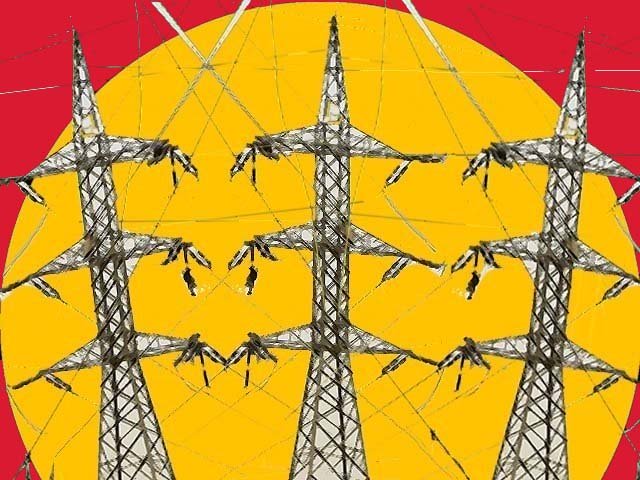
Why are we not addressing the HIV epidemic seriously?
Acknowledging the epidemic and then curtailing the spread of HIV are two separate, but equally arduous challenges
In April 2019, the media reported that there was a sudden rise in cases pertaining to human immuno-deficiency virus (HIV) amongst the children of Rato Dero a small town in the backward province of Sindh. Unfortunately, this was only the tip of the iceberg. During the next four months, a total of 30,192 people were screened for HIV, using WHO certified testing kits out of which 876 were found to be positive for HIV. Over 82% of those who tested positive were children.
Dr Assai Ardakani, WHO Representative to Pakistan, speaking at an HIV awareness seminar, stated that over 85% of people living with HIV in the region need life-saving antiretroviral therapy, but cannot or do not receive it. This is primarily due to the fact that those who are afflicted by HIV are usually not aware of their infection and therefore, fail to obtain the required course of treatment.
The reasons for the existence of this HIV epidemic lie in the mediums of transmission of the disease which include unsafe intravenous injections, unchecked child delivery procedures, unsafe practices at blood banks, poor implementation of infection-control and above all, the improper collection, storage, segregation and disposal of hospital waste. Acknowledging the epidemic and then curtailing the spread of HIV are two separate, but equally arduous challenges. Every year, we talk about prevention of HIV by encouraging the general public to get themselves tested so that, in case the disease is identified, early treatment can be provided to limit the effects of the affliction.
One of the Sustainable Development Goals issued by the United Nations is to eradicate HIV or the AIDS virus by 2030. This falls under the ambit of goal number three, namely good health and well-being. However, I feel that the issue of HIV is still not being handled properly by some countries including Pakistan.
Poor health governance
Prevention is always better than the cure, but sadly, we rely on hindsight and take measures accordingly in order to combat healthcare issues without showcasing to the public the dangers that such diseases pose so that they can be informed from the beginning and immediate steps can be taken to manage the disease.
Provincial healthcare budgets are already miniscule and their allocation is also questionable, primarily due to financial corruption and policies that discourage prevention and instead, focus on the cure. Owing to financial constrains, the health sector of the country is already deplorable with many areas not having access to hospitals or proper healthcare. There are other prevalent issues as well, which include the rising monopoly of the commercial pharmaceutical sector, non-availability of regular standard testing at hospitals and poor advocacy by the media and the state on prevention as the single-most effective cure. Perhaps insurance companies should also be directed to cover the treatment of HIV as a part of their health insurance policies.
A dangerous misconception
A common misconception about HIV is that it is untreatable and is akin to a death sentence. Nothing could be further from the truth. The WHO slogan released on World Aids Day states that ‘HIV is treatable’ and this message needs to be taken very seriously by our medical experts and general masses alike, as majority of our society is still suffering from ignorance regarding the subject. Admittedly, HIV is not completely curable, but it is treatable and can be contained. People with HIV can lead healthy lives with no risk of passing on the infection if it has been caught in time and treated timely.
For city dwellers, testing for HIV is relatively simple because all hospitals, whether government or private, offer the required test. However, rural communities bear the brunt of such diseases, primarily due to the poor state of facilities which means they are forced to travel several kilometres to obtain even the most basic of healthcare services. While there are a few charitable organisations that provide HIV screenings and preventive training facilities, they cannot be relied upon, simply because they are very few in number. Therefore, unless significant steps are taken at government level, we may be unable to contain this epidemic.
Transmission through sex workers
Individuals who visit sex workers usually indulge in unprotected sex in unsanitary environments. This in turn puts both the client and the sex worker at risk of contracting multiple infections and sexually transmitted diseases (STDs) such as HIV. Due to the criminalisation of such activities, sex workers do not normally seek treatment as they are afraid of societal victimisation and criminal prosecution by authorities. Additionally, men who acquire the services of sex workers act as transmitters of the disease and they transfer the disease to their partners and via them to their children. Sex and diseases primarily transmitted sexually are often regarded with scorn, as even discussing sexual health is almost taboo in the country. This added stigma also adds to the shame, decreasing chances of people opting for treatment, while it also reduces avenues for awareness. This is a cultural dilemma in our society and with little restrictive measures in place, the situation seems to be worsening.
Perhaps it would be advisable for charitable organisations to divert some of their resources for the treatment of HIV among sex workers, while also concentrating on building programmes aimed at spreading awareness.
In summation, the lack of economic parity, poor health care, lack of basic knowledge about HIV and the carefree attitude of the government towards prevention of HIV in most parts of the country means that the disease is posing a major threat to our future generations.




COMMENTS
Comments are moderated and generally will be posted if they are on-topic and not abusive.
For more information, please see our Comments FAQ